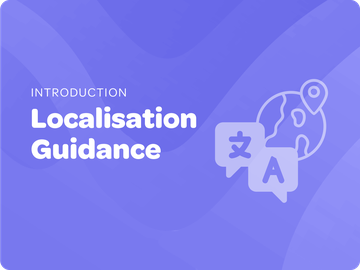Localisation Guidance
This page will help you to adapt or change your DSB content to fit your cultural context. It is particularly useful for translators working to translate the DSB into a local language.
While the toolkit has been designed to address a wide range of global contexts, adapting it to the specific customs, values, and practices of your local context will enhance its effectiveness. By tailoring the content, you can ensure better engagement, understanding, and immersion. This will ultimately lead to strategies that are more relevant and impactful for the stakeholders involved.
As a facilitator, you are the owner of this toolkit. Your role involves actively considering what needs to be adapted to best fit the local context. By adapting both the toolkit and your approach, you can ensure the DSB will be suitable and relevant to your context.
Below, we’ve outlined key areas of the toolkit that require careful attention to ensure they are effectively tailored to your workshop participants’ context.
Language and Terminology
The language and terminology used in the toolkit are foundational to its accessibility and impact. When translating or adapting the content to your local context, consider the following:
- Cultural appropriateness:
- Ensure that the translated toolkit remains culturally sensitive and clear.
- Replace any jargon or overly technical terms unless these are already understood within the local context.
- Choose simple, relatable expressions.
- Sensitive words and phrases:
- Review all metaphors, idioms, and symbolic language.
- Keep an eye out for ideas or phrases that may evoke a negative response from your participants.
- Make sure the language used aligns with the cultural and religious values of your audience. For example, in the “Her First” module, rephrasing “gender” as “social equity” could make the concept more palatable in regions where discussions on gender may be sensitive. As a facilitator, you must present these ideas thoughtfully, and retain the core message while minimising negative responses.
Contextualising Examples
Contextual relevance not only enhances understanding, but also inspires confidence in applying the toolkit’s strategies. Participants are more likely to engage with concepts that feel familiar and relevant to their own realities. To make the toolkit resonate on a deeper level, replace global examples, such as those in the prompt cards, with region-specific case studies and anecdotes. Consider sharing stories during facilitation that reflect the lived experiences of the communities they are serving.
Imagery
Imagery is a powerful tool for engaging participants and fostering relatability. Ensure that the visuals in the toolkit reflect the cultural context of your audience. This includes adapting the style of illustrations, the depiction of characters, and the overall aesthetic to align with local customs, values, and preferences. Thoughtfully tailored imagery helps participants feel represented and more connected to the material, making workshops more engaging and impactful.
Thank you for your commitment to making this process a success!
Average Rating: ☆ ☆ ☆ ☆ ☆ (0 reviews)


